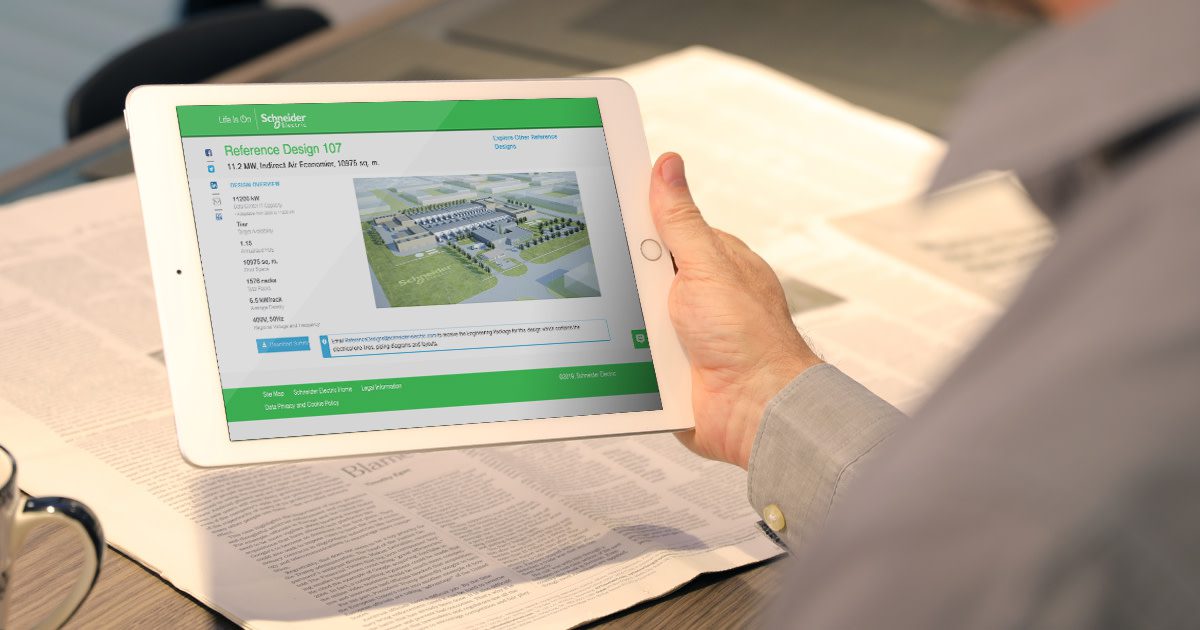Previously published on Datacenter Dynamics.
Building or expanding a data center is a hugely complex task. Not just because of the need to anticipate the IT equipment necessary for running new applications or expand cloud services, but also to plan the supporting infrastructure – such as power distribution and cooling – essential for the IT systems to function.
This is especially so for colocation providers, who often satisfy a mix of tenants whose equipment requirements vary, all while keeping their own costs under control. Consequently, it is no longer practical to completely engineer all aspects of a data center from the outset. What these providers need is versatile reference architecture, and a cost-effective way to add supporting infrastructure in blocks as new IT capacity is added.
This requires a partner with expertise across a wide range of areas including medium voltage and low voltage power systems, whitespace electrical distribution, UPS equipment, cooling systems and rack PDUs. This breadth of expertise should provide a partner with a holistic view of areas like the data center power chain, and make it possible to develop an integrated solution that can serve as a reference data center design for colocation providers to build with.
Finding the sweet spot
A recent study conducted by Schneider Electric has concluded that the sweet spot for a ready-made low voltage power train block for the colocation market is at the 1,500kVA level. Every data center will have slightly differing requirements, but for a pre-specified reference architecture that can serve as a template towards a solution, this design was verified as the most optimal for cost and efficiency, while still providing high reliability.
Schneider Electric’s reference design starts at the transformer, which steps down the voltage from the medium voltage utility feed, typically 11kV, to a low voltage level of 400V, and includes the low voltage distribution, including breakers and switchboard, and the UPS.
It should be noted that this reference design has been developed primarily for IEC standard and the European market, hence the design focuses on 400V applications.

According to Schneider Electric’s Senior Solution Architect Brice Martinot-Lagarde, whatever the size of the data center 1MW or 50MW of IT, main variations in electrical distribution come at the medium voltage stage, while the low voltage distribution side is a fixed voltage and so can easily be standardized.
“We realized that this block, which consists of the transformer, the low voltage distribution and the UPS can be standardized, with not a lot of differences in-between. So that creates a good focal point to optimize and to work towards simplification and standardization,” he says.
Standardization in this case means finding the sweet spot for each component part of this power train block, so as to achieve the most optimized overall system at the end of the process. For this reference architecture, Schneider Electric designed around some of its newer products such as the Galaxy VX UPS and MTZ circuit breaker ranges.
“The optimization comes from the size of the different products, so the first thing we consider is the medium voltage switch that protects the low voltage powertrain, and a decent figure for the major voltage circuit breaker is beyond 1MVA,” explains Martinot-Lagarde.
“The second part is the MV/LV transformer, and we know the most cost-effective way of building this transformer is to fit with the good design ratios plus utility provider’s size, such as 1,000kVA, 1,250kVA, 1,600kVA, then 2,000kVA – that’s typical in Europe – and using this size of transformer will reduce the time to market and will optimize the cost,” he adds.
Another aspect that has to be considered is the main low voltage breaker. Schneider Electric’s MTZ range includes several, and one capable of delivering up to 4,000A MTZ2 is judged as best fit for this reference design.
The third part is the UPS, and Schneider Electric’s three-phase Galaxy VX portfolio starts at 500kW and scales using 250kW power blocks up to 1,500kW.
Integrate to optimize
“And at the end of the study, we found a compromise between the medium voltage protection, the transformer, the main LV breaker and of course the UPS. Combining all those parameters, we found that 1,500kVA is the most optimal level for colocation providers to get the best kW per value (€), to have the best footprint per kW and also considering the delivery aspect, because it all fits very well in the one platform with close-coupled integration,” Martinot-Lagarde says.
“Schneider Electric is keen to point out also that this reference architecture for reliability performance aspect includes the different configurations of the system with sequences of operation, protection coordination, grounding study and short circuit current optimization to speed up tests and commissioning phases. This part integrates also the transfer source with back-up generation, the load bank or the Cooling distribution, all seen as options that can be connected to the power train according to customer’s overall design decision.”
Finally, this reference architecture integrates components 100% compliant for the digital transformation journey with EcoStruxure suite. EcoStruxure includes design, configurations and commissioning tools to validate faster design and installation as well as different software elements to control, operate and analyse data to maximize cost effectiveness, performance and mitigate risks of the electrical distribution during evolution of the life cycle.
Colocation providers with Consulting & Engineering firms can engage with Schneider Electric’s team of technical experts for close collaboration to deliver a power train that fits their exact needs. What this approach does mean is that much of the legwork and detailed technical information has already been produced to inform the final design, shortening the process and cutting out some of the associated costs.
Attending DCD London? Be sure to see Dave Johnson’s plenary panel at DCD London November 5, How should the data center industry now respond to the global climate emergency?
End-to-end expertise
The ability to provide end-to-end expertise covering the entire data center power infrastructure is seen as a key differentiator for Schneider Electric, according to Patrick Donovan, Senior Research Analyst in Data Center Science Center of Schneider Electric.
“The key thing is that you have all these cross-functional experts that work together as a team, and normally these things are done in isolation – the low-voltage section, the white space, the connection to the utility, these are done in isolation in other cases,” he says.
“But in Schneider Electric, because we have all this expertise in house, we can work together, and by working together we can find areas where we optimize the overall design and uncover savings, make it smaller, and more efficient.”
This expertise comes from Schneider Electric’s Electrical Distribution Competency Center team, which meets regularly to develop and share optimized reference designs of this kind. The end result shows that cost savings and high performance such as reliability, efficiency or time to market can be achieved by combining expertise across areas of competency and taking an end-to-end overview of a problem. The same engineers also work directly with customers when developing a design to be implemented in their data centers.
The reference architecture for the 1,500kVA low voltage power train can be found in Schneider Electric’s design portal. Explore the full portal to access other designs, too.



